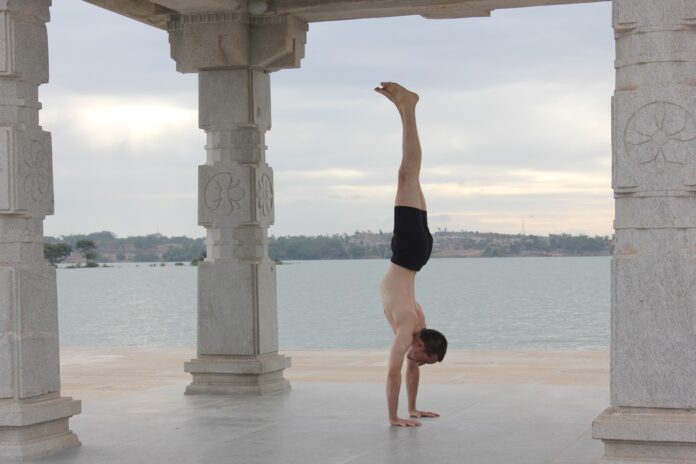Do you know Ashtanga Vinyasa, this yoga school based on the harmonization of movements and breathing? It is distinguished by a dynamic approach to the discipline. No more immobile postures, here it is about developing your body and mind through a series of dynamic and rhythmic poses. Overview.

A short history of ashtanga vinyasa yoga
Ashtanga vinyasa yoga was born under the impetus of Sri Krishna Pattabhi Jois , a yogi who developed his art in the 1930s in Mysore, India. He taught until his death in 2009 and his school still exists, administered by his followers.
The principle is simple, through learning the discipline, the student progresses within ashtânga, the eight stages of Yoga. Strengthening the body is necessary first, in order to allow the mind to concentrate fully and reach the “state of unity”, the eighth stage. It should be noted that many schools of yoga are based on this philosophy. It comes directly from the Indian philosophical collection yoga-sutra written around the 2nd century and is now a reference in the field.
Ashtanga vinyasa yoga: technical but easy
In practice, the teaching is based on six series, classified according to their level of difficulty. A series is made up of about fifty postures and lasts about an hour and a half. The whole is punctuated by the ujjai , or victorious breathing. Each movement performed during the exercise must be in harmony with the breathing; it is the breath that sets the rhythm. Note also that vinyasa means “synchronization of movement with breathing”.
The acrobatic aspect of some postures might give the impression that ashtânga yoga is only for accomplished athletes. Anyone can practice it, regardless of your physical condition. The beginner series do not require the flexibility of a prima ballerina, and the training will make you progress quickly. Also note that the classes are generally for all levels.
With each student working at their own pace, the teacher moves within the group, providing personalized advice for each of his students. Learning is thus done without pressure and according to the abilities of each student.
Ashtanga Vinyasa yoga: dynamic but effective
If ashtânga yoga is so renowned in the world today, it is for its benefits to the body. Beyond the obvious gain in flexibility and tone, ashtânga allows you to do real work on your serenity. The breathing work performed, or pranayama, requires a high level of concentration.
So, after a certain amount of practice, we reach a state of plenitude where only the rhythm of our entire body comes into play… The serenity that comes from this state of meditation is an excellent remedy against the stress and tensions of everyday life, and it is not the only benefit of this well-being technique .
As you will have understood, Ashtanga Yoga is a demanding discipline, but complete and enriching at all levels. To try the adventure, you just need to find a school near you and begin your inner journey.

